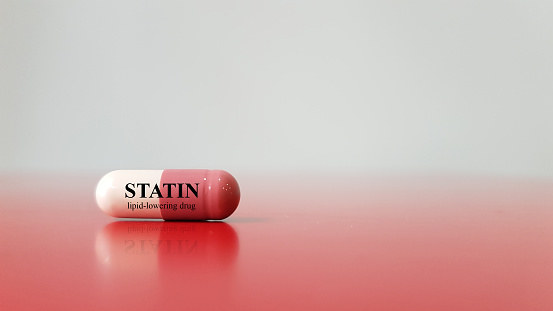Hyperlipidemia, a condition characterized by elevated levels of lipids in the blood, is a significant risk factor for cardiovascular diseases such as heart attack and stroke. The management of hyperlipidemia often involves lifestyle modifications, including diet and exercise. However, in many cases, pharmacological intervention is necessary to achieve optimal lipid levels. The following are five antilipidemic drugs commonly used to treat hyperlipidemia.
1. Statins
Statins are the most widely prescribed class of drugs for lowering cholesterol. They work by inhibiting HMG-CoA reductase, an enzyme involved in the synthesis of cholesterol in the liver. This results in reduced levels of low-density lipoprotein (LDL) cholesterol, often referred to as “bad” cholesterol, and a modest increase in high-density lipoprotein (HDL) cholesterol, known as “good” cholesterol.
see also: Which Body System Is Responsible for Hyperlipidemia?
Mechanism of Action
Statins block the conversion of HMG-CoA to mevalonate, a precursor of cholesterol. This inhibition leads to an upregulation of LDL receptors on hepatocytes, increasing the clearance of LDL from the bloodstream.
Common Statins
- Atorvastatin (Lipitor)
- Simvastatin (Zocor)
- Rosuvastatin (Crestor)
- Pravastatin (Pravachol)
- Lovastatin (Mevacor)
Clinical Benefits
Statins have been shown to significantly reduce the risk of cardiovascular events. They are effective in both primary and secondary prevention of heart disease, making them a cornerstone in the management of hyperlipidemia.
Side Effects
Common side effects include muscle pain, liver enzyme abnormalities, and, rarely, rhabdomyolysis, a serious condition involving muscle breakdown.
2. Ezetimibe
Ezetimibe is a cholesterol absorption inhibitor that works by blocking the absorption of cholesterol from the small intestine. It is often used in combination with statins for patients who require additional lowering of LDL cholesterol.
Mechanism of Action
Ezetimibe targets the Niemann-Pick C1-Like 1 (NPC1L1) protein, which is responsible for the uptake of cholesterol in the intestines. By inhibiting this protein, ezetimibe reduces the amount of cholesterol delivered to the liver, prompting the liver to increase the clearance of LDL cholesterol from the blood.
Clinical Benefits
When used alone, ezetimibe can lower LDL cholesterol by approximately 18%. In combination with statins, it can provide an additional 25% reduction. This combination therapy is beneficial for patients who do not achieve their cholesterol goals with statins alone.
Side Effects
Ezetimibe is generally well-tolerated, with few side effects. Some patients may experience gastrointestinal issues or joint pain.
3. PCSK9 Inhibitors
Proprotein convertase subtilisin/kexin type 9 (PCSK9) inhibitors are a newer class of drugs that have shown great promise in lowering LDL cholesterol. These monoclonal antibodies target PCSK9, a protein that degrades LDL receptors on the liver, thereby increasing the number of receptors available to clear LDL cholesterol from the blood.
Mechanism of Action
By binding to PCSK9, these inhibitors prevent it from attaching to LDL receptors, which enhances the recycling of these receptors and increases the removal of LDL cholesterol from the bloodstream.
Common PCSK9 Inhibitors
Alirocumab (Praluent)
Evolocumab (Repatha)
Clinical Benefits
PCSK9 inhibitors can reduce LDL cholesterol by 50-70%, even in patients already on statins. They are particularly useful for individuals with familial hypercholesterolemia or those who are statin-intolerant.
Side Effects
These drugs are administered via injection and are generally well-tolerated. Potential side effects include injection site reactions, flu-like symptoms, and neurocognitive effects.
4. Bile Acid Sequestrants
Bile acid sequestrants are an older class of drugs that reduce LDL cholesterol by binding to bile acids in the intestine, preventing their reabsorption. This leads to increased conversion of cholesterol to bile acids in the liver, thereby reducing cholesterol levels.
Mechanism of Action
These drugs bind to bile acids, forming an insoluble complex that is excreted in the feces. The loss of bile acids prompts the liver to convert more cholesterol into bile acids, thus lowering the levels of cholesterol in the blood.
Common Bile Acid Sequestrants
- Cholestyramine (Questran)
- Colestipol (Colestid)
- Colesevelam (Welchol)
- Clinical Benefits
Bile acid sequestrants can lower LDL cholesterol by 15-30%. They are often used in combination with statins or other lipid-lowering therapies for an additive effect.
Side Effects
Common side effects include gastrointestinal issues such as constipation, bloating, and nausea. These drugs can also interfere with the absorption of other medications and fat-soluble vitamins.
5. Fibrates
Fibrates are primarily used to lower triglyceride levels and can also modestly increase HDL cholesterol. They are particularly beneficial for patients with mixed dyslipidemia or those at risk of pancreatitis due to severe hypertriglyceridemia.
Mechanism of Action
Fibrates activate peroxisome proliferator-activated receptor-alpha (PPAR-α), a nuclear receptor that regulates lipid metabolism. This activation leads to increased oxidation of fatty acids and reduced synthesis of triglycerides.
Common Fibrates
Fenofibrate (Tricor)
Gemfibrozil (Lopid)
Clinical Benefits
Fibrates can lower triglyceride levels by 30-50% and raise HDL cholesterol by 10-20%. They are particularly effective in patients with high triglycerides and low HDL cholesterol.
Side Effects
Potential side effects include gastrointestinal discomfort, gallstones, and an increased risk of myopathy when used in combination with statins.
Conclusion
Managing hyperlipidemia effectively requires a comprehensive approach that includes lifestyle changes and pharmacotherapy. Statins remain the cornerstone of treatment due to their robust evidence base and proven efficacy in reducing cardiovascular risk. Ezetimibe and PCSK9 inhibitors offer additional options for patients who require further LDL cholesterol reduction or cannot tolerate statins. Bile acid sequestrants and fibrates provide targeted therapies for specific lipid abnormalities, such as high triglycerides or the need for combination therapy.


